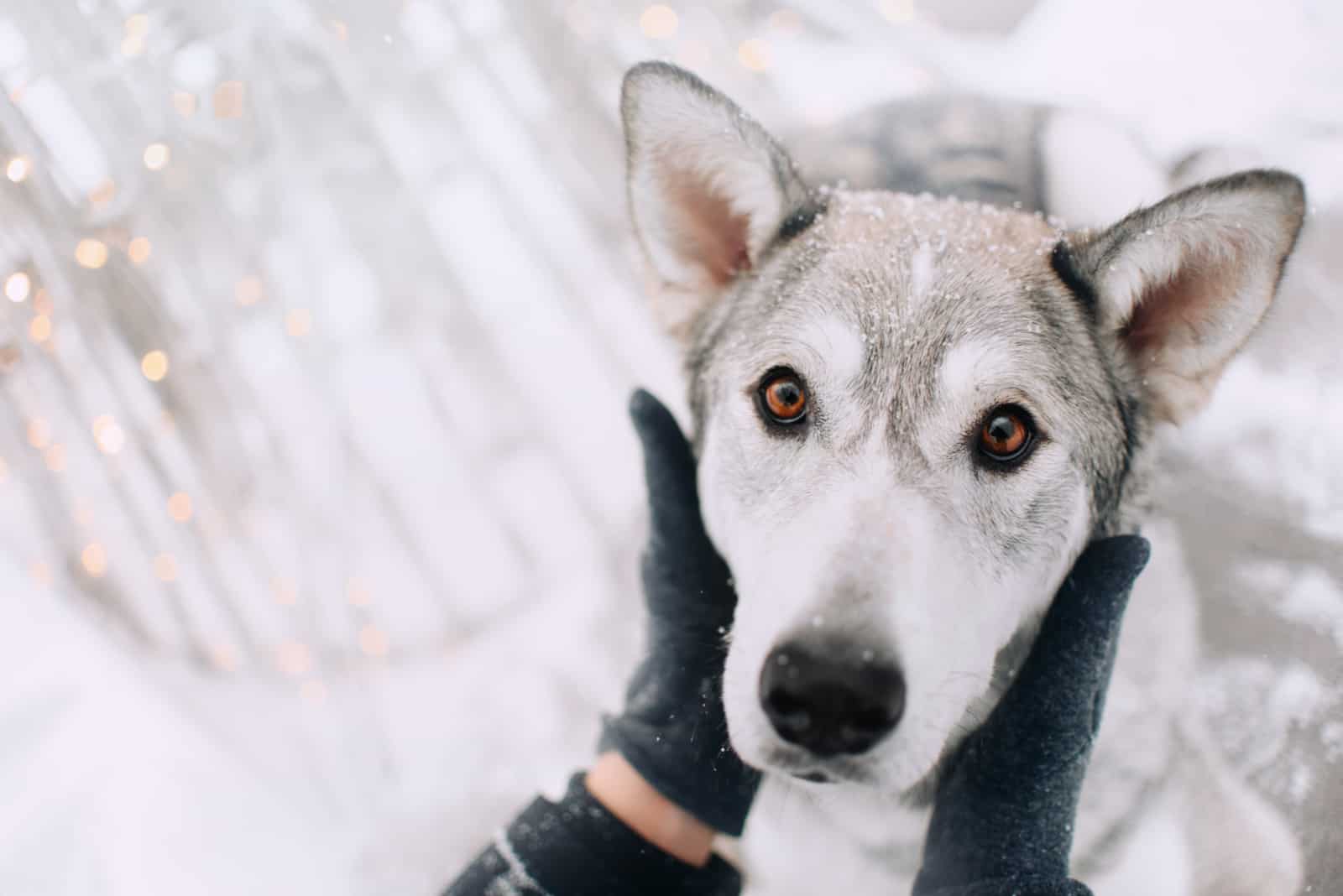If you’re like most dog owners, you’re probably as familiar as you can get with your furry friend and you know your pup like the back of your hand.
That’s why whenever you see any change in your dog’s usual behavior, body temperature, or physical appearance, it’s normal to feel a bit concerned and ask yourself: Is everything okay with my dog’s health?
That said, you also probably already know that getting to the bottom of a problem is not as easy with dogs as it is with humans since our furry best friends obviously can’t verbally communicate what’s bothering them.
Apart from rare, extreme, and sudden deviations from your dog’s typical behavior that might potentially indicate a serious underlying health problem that calls for a trip to the vet, there are other kinds of minor things about your pooch you might have noticed like when you pet your pup and its ears feel colder than usual.
Cold ears are a pretty common occurrence with most dogs, and it’s usually not a sign of some serious, life-threatening, undiagnosed health issue that should raise concern.
It’s usually something less complicated and malign than what we first think of, so there’s no need to jump to conclusions right away.
That’s why it’s important to learn about the potential causes of a dog’s cold ears, so that you are able to discern if your dog needs a trip to the vet, or just a simple cuddle session to warm up a bit.
So, without further ado, let’s take a look at what the most common causes of cold ears in dogs are, and what can be done to help keep your pup’s ears nice and toasty.
1. Cold Weather
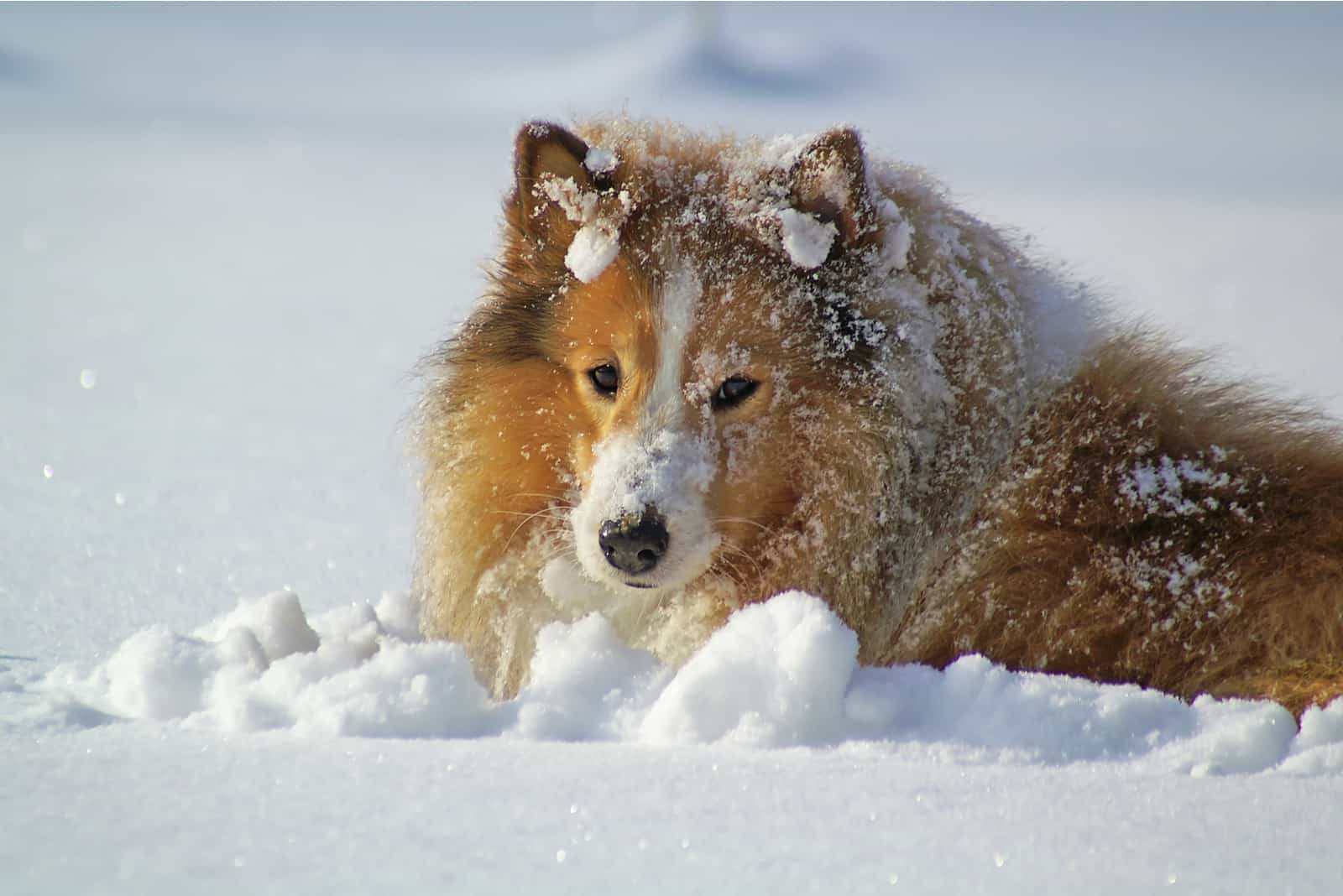
Okay, I’ll admit that this one’s pretty obvious, but just like how we humans are susceptible to extremely cold temperatures, our furry friends are not invulnerable to extreme cold either.
So, just like how we humans can get cold ears if we don’t wear protection in low temperatures, a dog’s ears will also lose their warmth after a while of being exposed to extreme temperatures.
This happens to both humans and dogs as a kind of ingrained biological reaction to cold exposure. In most mammals, since the ears are located on the most distant part of the body in relation to the circulatory system, we tend to lose body heat through the ears.
When exposed to low temperatures, the body’s autonomic nervous system sends electrical signals to the heart to reduce blood flow to distant parts of the body like the ears, nose, and extremities, and redirect blood flow to the vital organs like the heart and lungs to ensure survival.
That said, if we take an average, medium-sized, healthy young dog that has been out in the cold for a while and bring it inside to warm up, it shouldn’t take too long before the dog’s body temperature returns to normal.
On the other hand, if it’s an older dog, a small dog, or just a pooch with short hair, it might take them a while longer to regain their body heat.
Senior dogs, just like senior humans, are more likely to lose body heat quicker since their ability to regulate their own body temperature reduces with age. This is also true for young puppies because they usually don’t gain the ability to regulate their own body heat before seven weeks of age.
On the other hand, because of their tiny stature, small dogs don’t have that much body heat in the first place, so they can get pretty cold pretty quickly if exposed to low temperatures.
Short-haired breeds are also prone to losing body heat quickly since they lack the thick insulation that a long-haired dog breed’s coat provides.
And, then we have dog breeds that have naturally perky and upright ears in adulthood like German Shepherds or Siberian Huskies. Since their ears don’t flop down and adhere to their head, they are more exposed to cold winds and their ears tend to lose heat quicker than dog breeds with naturally floppy ears.
What You Can Do About It.
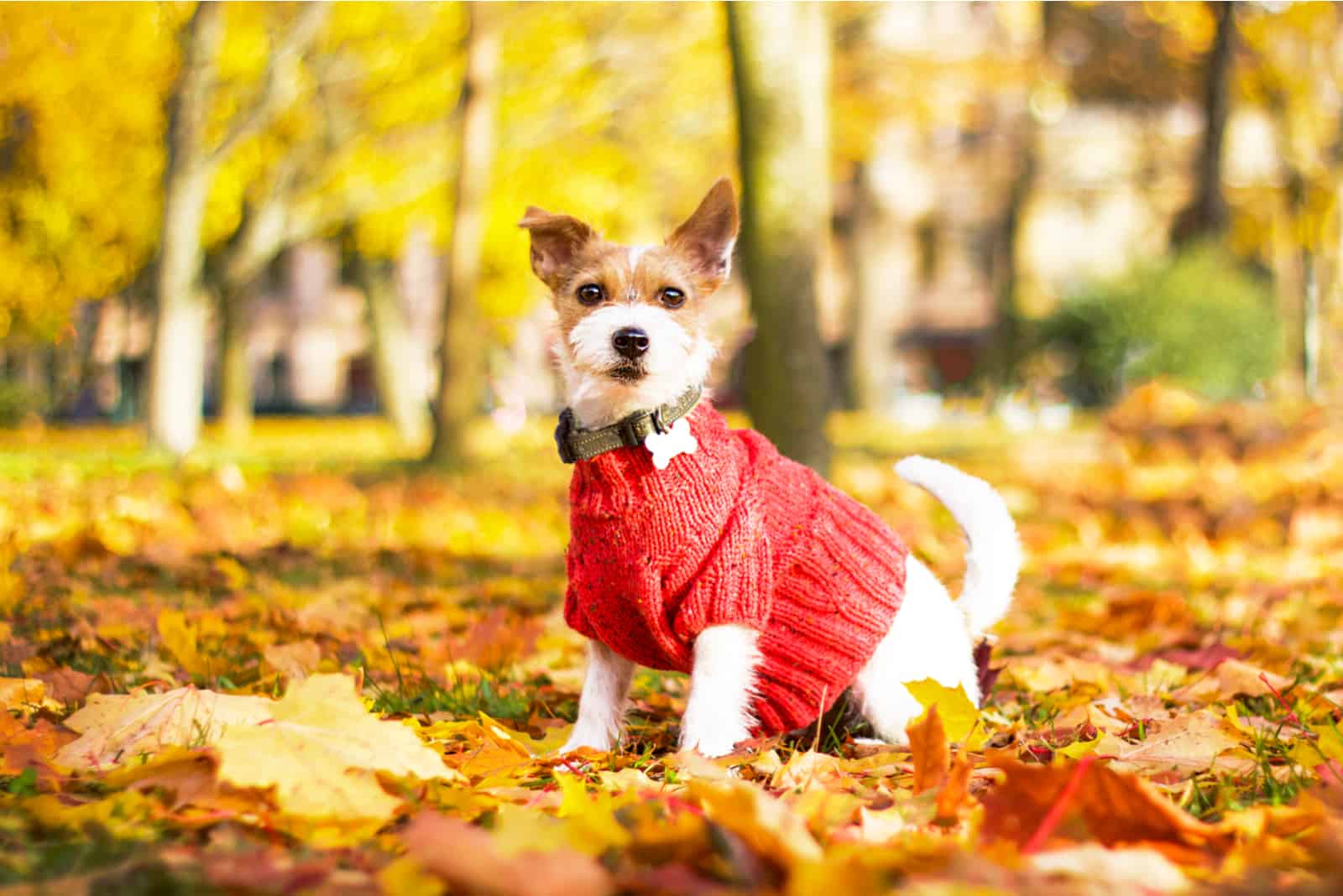
The best way to cope with cold ears induced by exposure to cold weather is to control the time your pup spends outside in the cold.
If you own a dog that’s older, small, and short-haired, like for example, a 10-year-old Chihuahua that’s all three of those, make sure not to let it spend too much time outside in freezing temperatures.
Try to keep your pooch nice and warm by buying it a comfortable doggy sweater when going out for a walk. Your pup will most likely take some time getting used to it, but a little initial discomfort sure beats freezing nearly to death in the cold.
Pay attention when walking your puppy and soon as you see your pooch is trembling – that means it’s time to go inside and warm up.
2. Frostbite.
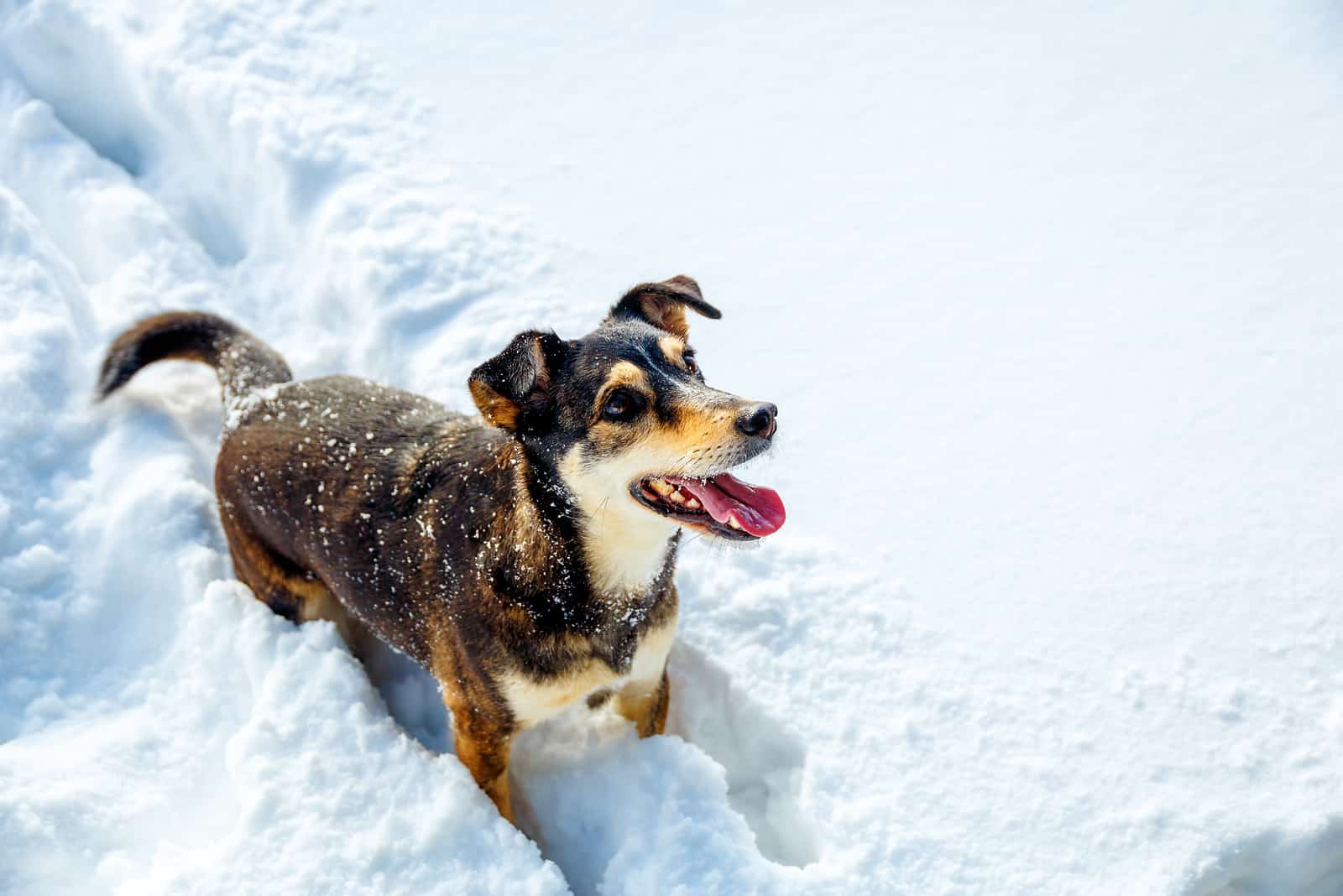
If, however, due to some unfortunate series of events, your dog has spent a lot of time exposed to cold weather, there is a possibility that it might have developed frostbite.
Frostbite usually occurs in the distant tissues of the body like the paws, tail, and ears.
Because these parts of the body get less blood circulation and contain tiny blood vessels, they can become damaged due to prolonged exposure to freezing temperatures.
To determine exactly whether your pooch is exhibiting early signs of frostbite, take a closer look at the tissue of its ears. Frostbitten ears usually have areas with bright pink discoloration and less hair on them.
Sometimes, in extreme cases of late-stage frostbite, the pink spots on the ears can develop into black spots, which is a clear sign of early-onset necrosis that might require surgical intervention.
What You Can Do About It

The easiest way to warm up your pup’s ears is to use a warm compress.
Once you get your pup inside in a warm environment, take a clean cloth and soak it in warm water (be careful not to use hot water!), then rinse the cloth and put it on the dog’s ears, and apply light pressure for about ten to fifteen minutes.
You should also use some warm blankets or towels and wrap your puppy up in a bundle to get its body temperature back to a normal level (which, for dogs, is usually 101 to 102.5 F°).
If the condition of your pup’s ears still doesn’t improve, and they act sluggish and unresponsive, you should pay a visit to the vet.
3. Circulation Issues
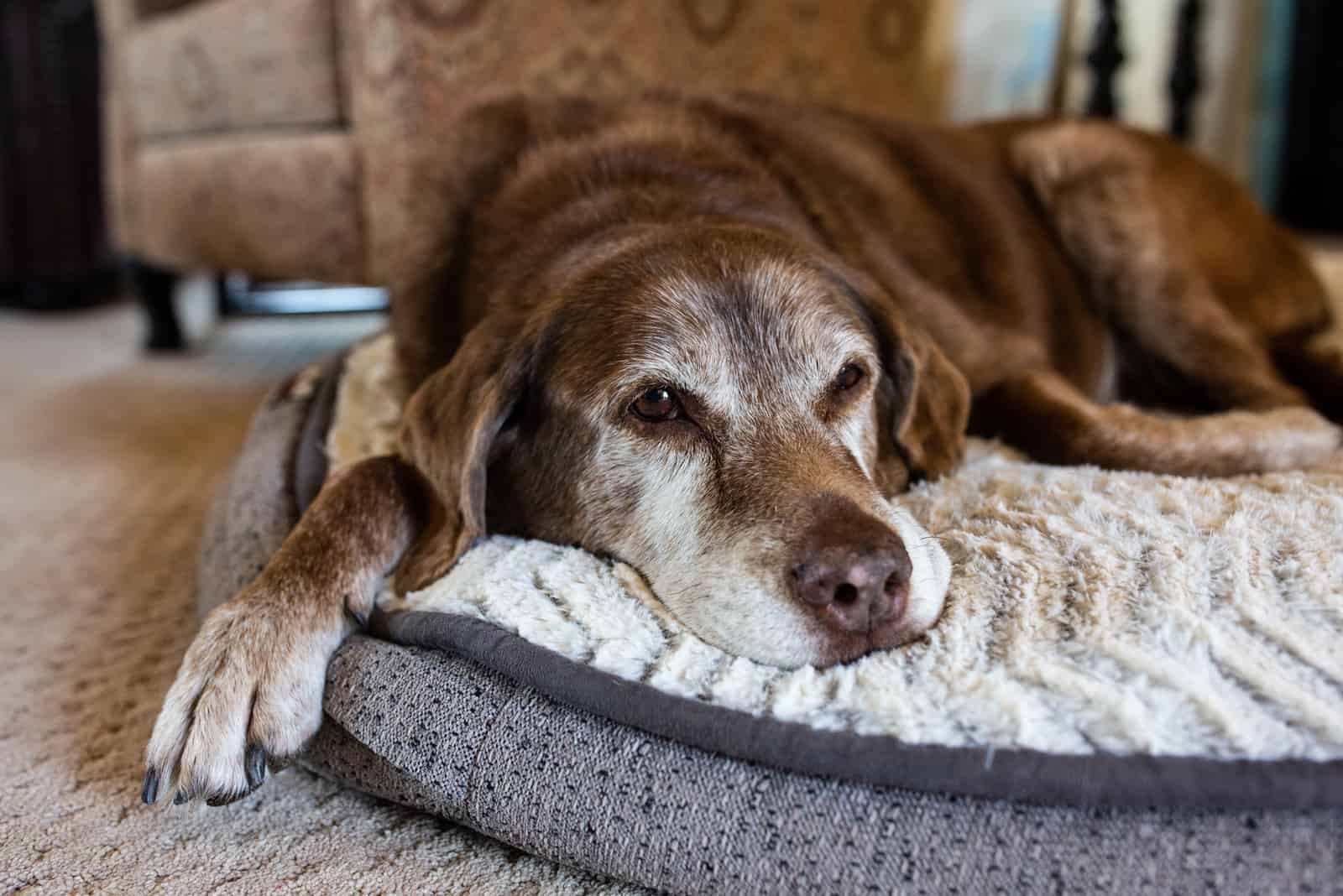
In the case that you’ve come back from a walk outside in the cold weather and your pooch is in a warm place indoors, but still has cold ears after a while, it could be because of poor circulation problems, or it could be a sign of an undiagnosed heart condition.
A heart condition being the reason for cold ears is most likely to be the case with senior dogs, although dogs of any age might be prone to hereditary heart problems.
Apart from cold ears, other signs of poor circulation are cold paws, trembling, sluggish movements, lack of energy, and localized erythema (or redness) between the pup’s toes.
There are different factors that can be the cause of circulatory problems in dogs – some of these include heart deficiency, blood clots, anemia, and even undiagnosed tumors that might be cutting off circulation or even causing internal bleeding.
What You Can Do About It
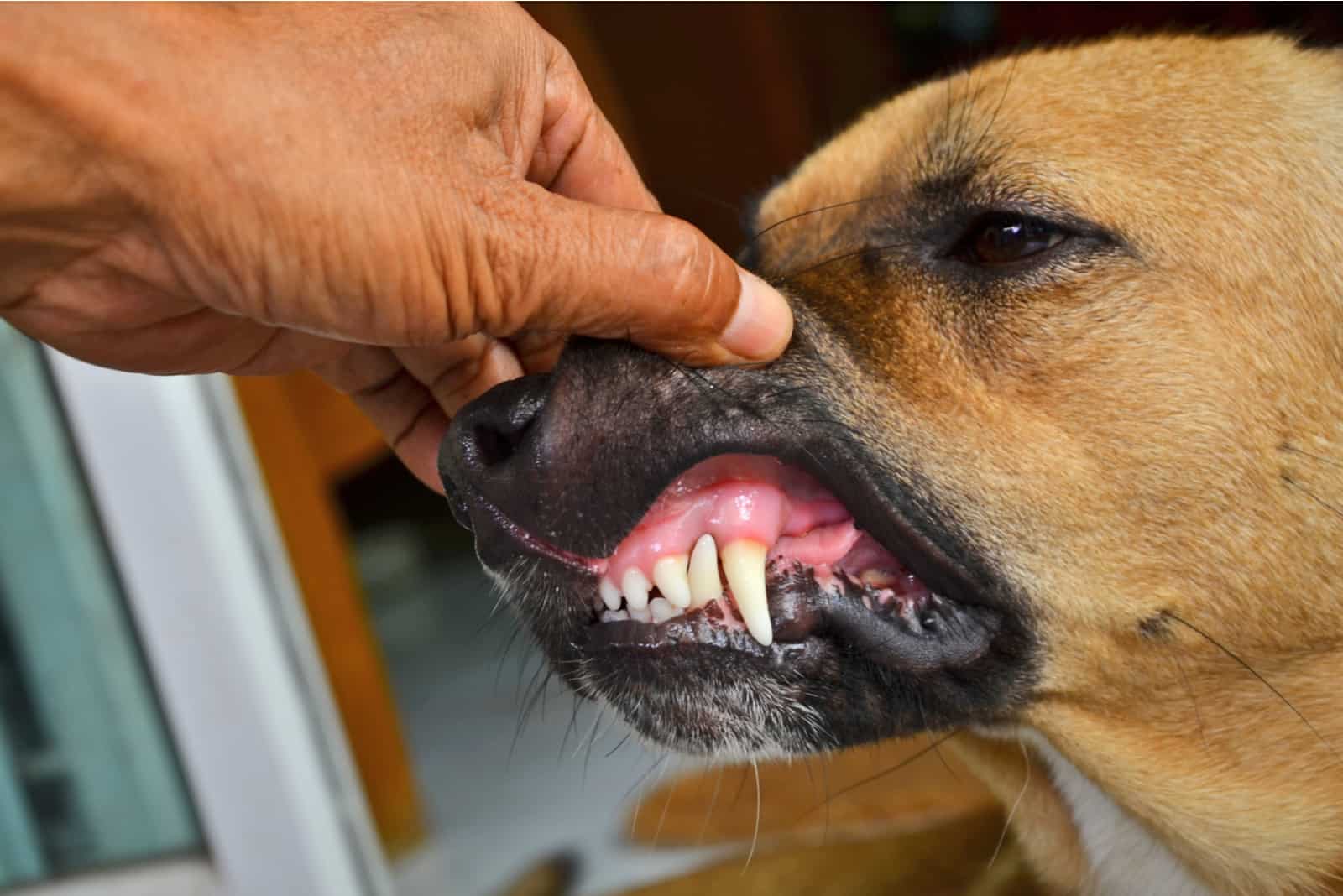
If you believe that your dog’s cold ears are a result of poor circulation and not just exposure to cold weather, there is a method you can try yourself first to determine if your pup has healthy circulation.
Place one of your fingers on the inside of your dog’s gums for a couple of seconds and press down gently, then remove your finger.
If your dog’s circulation is normal, the spot you gently pressed should briefly take on a lighter shade of pink, then return to normal in a couple of seconds once the blood rushes back.
If it takes more than five to ten seconds for the spot on the gums to return to its previous color, it might be a sign of poor circulation.
So, if you suspect that your dog might have a serious underlying health problem, that warrants a trip to the vet for a checkup.
The veterinarian will usually inspect your dog’s overall health to determine whether or not there are any underlying health problems that need to be treated.
If it turns out that your pooch has some kind of heart disease, there are certain lifestyle changes and medications that will help treat most conditions and return your dog back to a healthy state.
If the problem is a tumor that’s constricting blood flow or causing internal bleeding, surgical intervention is usually required. Surgical intervention might sound scary to a dog owner, but if performed correctly, most dogs usually recover well after a few weeks of rest and proper care.
4. Sickness

It’s easy to forget just how similar our furry companions are to us. Just like how we humans can come down with a cold from time to time due to exposure to viruses or bacteria, while they don’t catch the same colds, dogs can also exhibit symptoms of cold-like infections from exposure to bacteria and viruses.
In addition to cold ears, other symptoms of a dog cold include an unusually wet or runny nose, sneezing, coughing, labored breathing, and a lack of energy. So, if your dog displays more than one or two of these symptoms altogether, it may have come down with a viral or bacterial infection.
Minor colds usually go away on their own in about five to ten days, but if they persist longer than that, it might be a sign of a more serious infection like kennel cough. In any case, if you notice that your pooch has caught a cold, ask your dog’s vet for advice on how to proceed with treatment.
Understanding a dog earwax color chart can also help you understand whether your dog is sick or not.
What You Can Do About It.
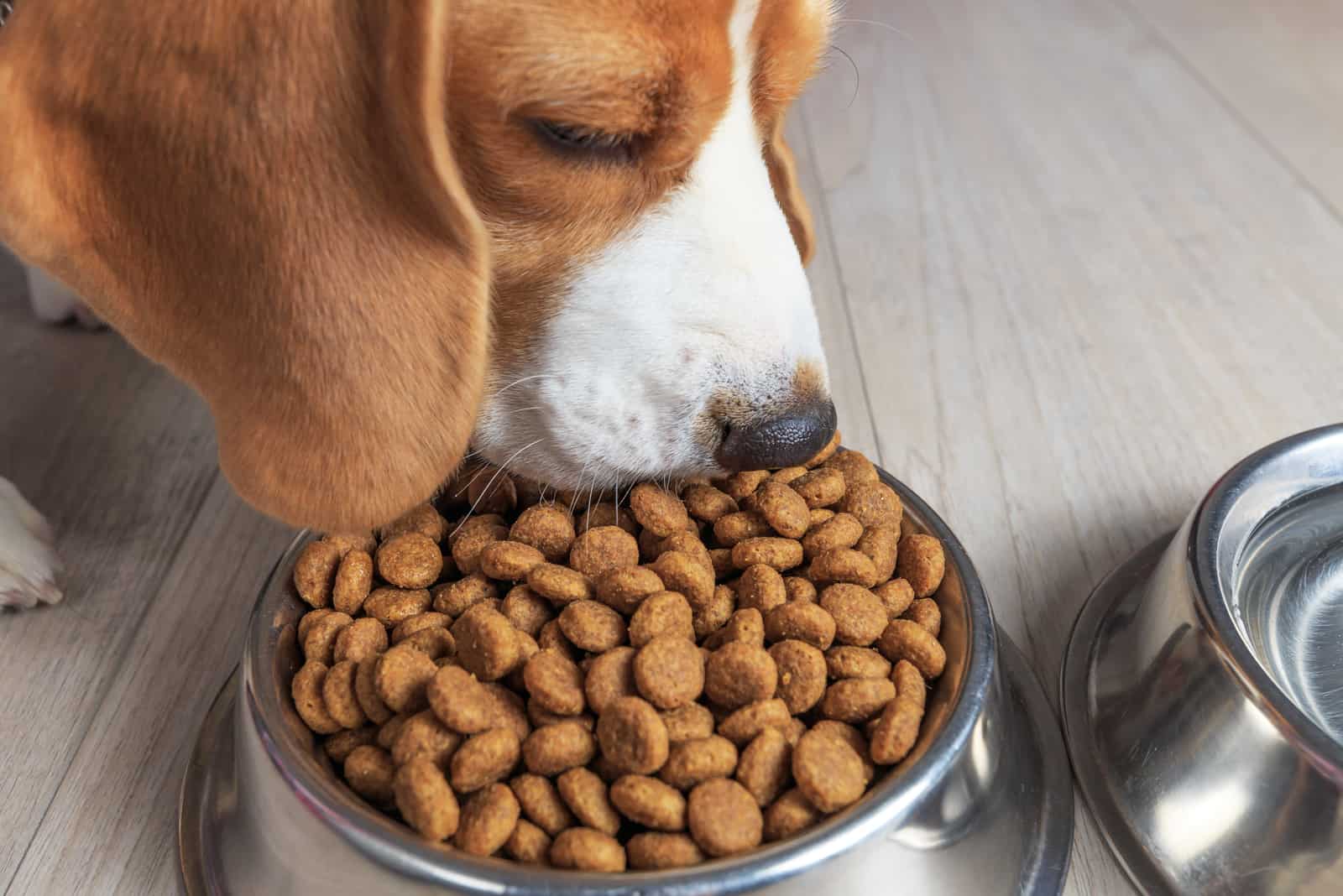
Although the viruses that cause a dog’s cold and a human’s cold are not the same and can not be transferred to one another, treating a dog’s cold is very similar to how you would treat a cold in humans.
Needles to say, the first thing you need to do is keep your pup warm and dry when it has the chills. When taking your dog outside, it’s important to have it wear warm and insulating clothes, preferably waterproof if the weather is cold and wet. That way, you ensure your dog stays dry and warm.
You’ll also want to limit your dog’s activity. This will usually be an easy task because your pup will most likely be lethargic while sick with a cold, but this is not always the case with minor colds, so make sure to give your pooch plenty of rest.
You want to make sure to keep your dog well fed and keep them drinking lots of fluids. This will, of course, keep their energy up and prevent dehydration.
If your pup doesn’t want to eat its regular food, try whipping up its favorite meal (my Chipin Jordan loves it when I make him boiled chicken with a bit of rice) to entice it to eat and maintain a healthy body weight. You can also give your dog some warm soup as a source of extra nourishment.
If you notice your dog seems congested, with a runny nose and watery eyes, use clean, dry wipes to remove any discharge and keep your dog’s nose and eyes clean.
If it has a bit of trouble breathing, you can try using a humidifier to help expand its airways and help it breathe easier.
You can also try to boost your dog’s immune system by adding a bit of superfood to its diet, like coconut oil and raw honey, which have strong antibacterial and antiviral properties.
Avoid giving your pooch any human medication unless prescribed by its vet.
Additionally, a dog ear position chart can also tell you a lot about your dog’s health condition. Besides noticing your dog’s ears are cold, a dog’s body language, like the position of his ears, can tell us a lot about his health.
In Conclusion
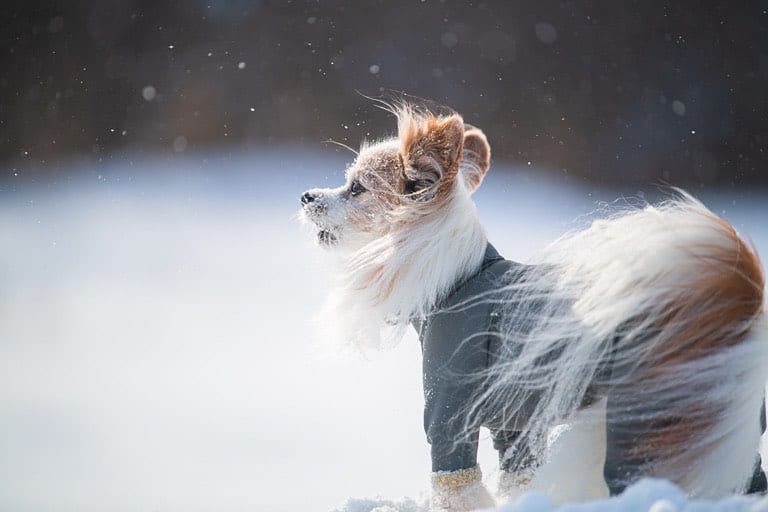
Photo from: @aya_outdoors
Now that you’re aware of the different reasons why your dog’s ears are cold, you’ll have an easier time discerning whether or not cold ears are cause for concern.
It all depends on every individual dog’s lifestyle, habits, behavior, and general health.
Usually, a dog’s cold ears are not a sign of something sinister, but it means that you should use a blankie or a warm compress to help your puppy warm up.
The most important thing to remember is to keep monitoring your dog’s behavior and its needs.
If you find that your pup’s cold ears are coupled with other symptoms we’ve explained in this article, take your dog to a professional for a health checkup.
Read Next:
•Why Does My Dog Fart So Much? How Can I Make My Dog Fart Less?
•Black Gunk In Dog Ear: What Causes It And How To Solve It
•21 Dogs With Long Ears: Which Breeds Have The Largest Ears?
